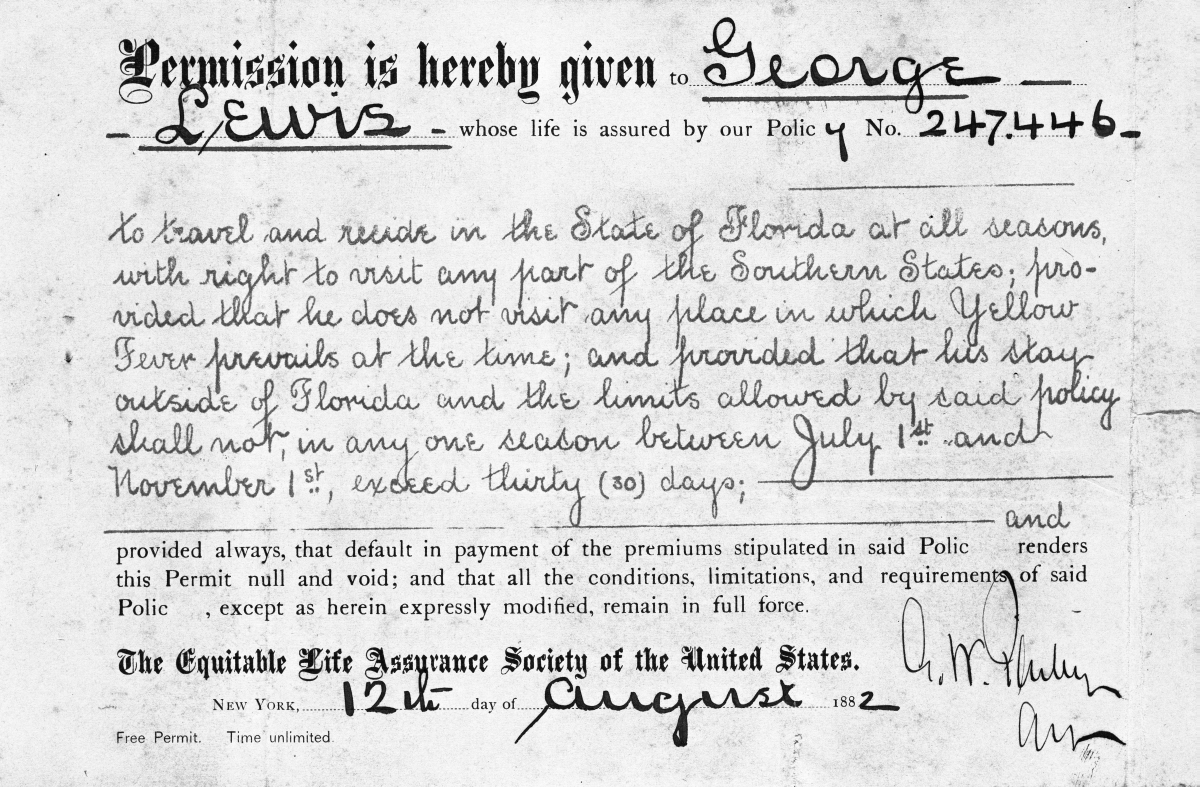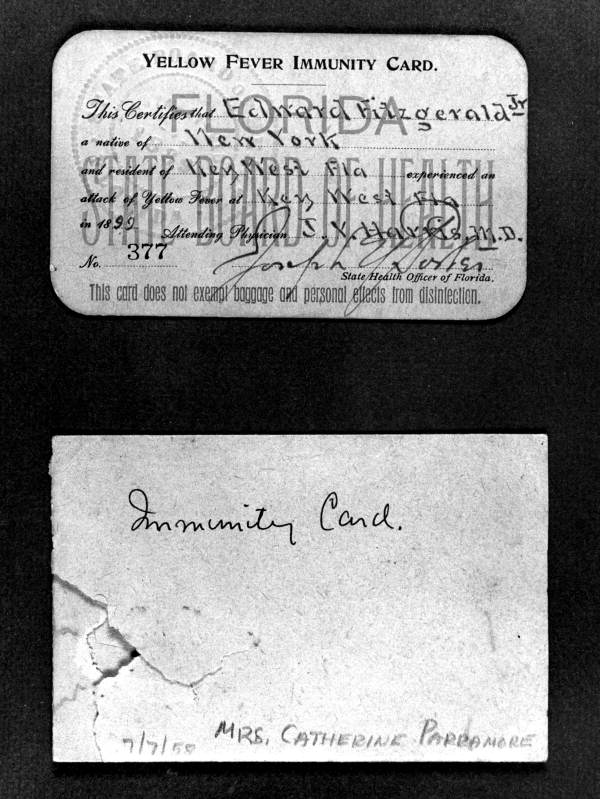Description of previous item
Description of next item
The Dreaded Yellow Jack
Published May 5, 2015 by Florida Memory
Yellow fever, also known as the “yellow plague” or the “yellow jack,” was one of the most dangerous and dreaded diseases prevalent in Florida during the 1800s. The disease is viral, spread primarily by the Aedes aegypti mosquito, but this knowledge was not widely known until the 20th century. In the meantime, epidemics often broke out in Florida during the summer months, especially in cities.
With no good understanding of how the disease was caused or spread, Floridians often blamed the infection on contact with a yellow fever patient or the presence of “miasmas,” swampy areas whose fumes supposedly affected those who breathed them in. Preventing yellow fever infection became an essential part of life in Florida. Entire communities, such as Bel Air outside of Tallahassee, were developed to provide a place for those who could afford it to get away from sickly downtown areas during the summers. Yellow fever even affected the social seasons, as many businesses and schools ceased operations during the hottest months to avoid the danger.
As more people moved into the state and transportation by rail became faster and more common, yellow fever epidemics became larger and deadlier. A series of outbreaks emerged in 1887 and 1888 in cities across the state, infecting thousands and wrecking local commerce. Larger port cities like Key West, Tampa, and Jacksonville were the hardest hit.
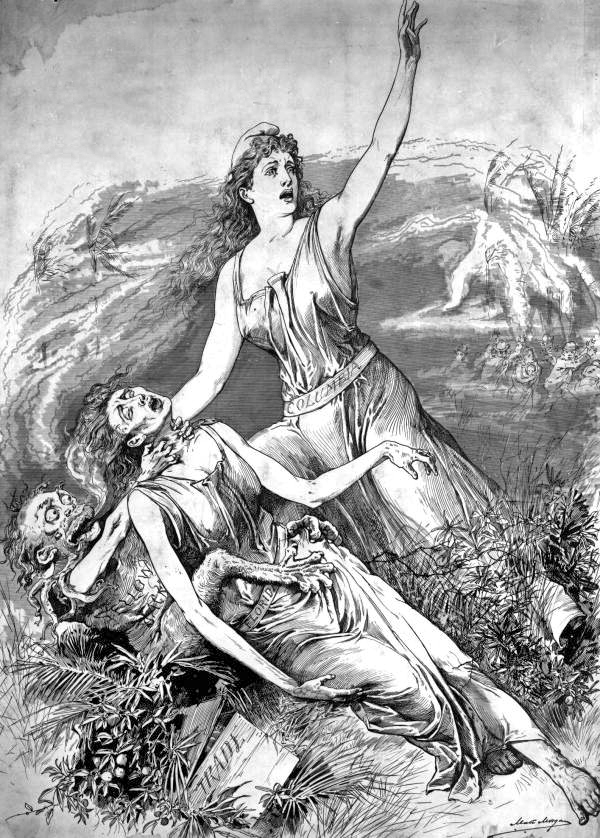
A drawing from Frank Leslie’s Illustrated Newspaper depicting Florida being dragged down by yellow fever (circa 1870s).
Hundreds of residents fled the cities, while those who remained tried every conceivable method to combat this scourge whose origins they could not understand. In Jacksonville, townspeople built large fires with heart pine, believing the pungent aroma of burning pitch would cleanse the air. Cannons were packed with heavy charges and fired in the center of town, with the belief that the shock waves would break apart the invisible organisms responsible for causing the fever.
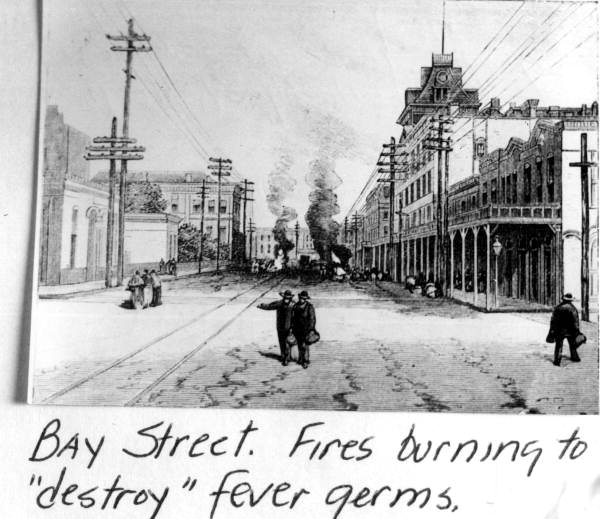
Pinewood fires burning in the middle of Bay Street in Jacksonville, which it was believed would purify the air (1888).
Yellow fever wrought considerable destruction in Florida, but it indirectly benefitted the state as well. The severity of the epidemics in 1887 and 1888 led legislators to take action by forming a State Board of Health to combat the problem. The Board met for the first time in 1889, with Dr. Joseph Y. Porter of Key West as the first State Health Officer. Porter and his colleagues across the state immediately set to work establishing quarantine policies for ports and working with local governments to clean up potential breeding grounds for disease. Survivors of yellow fever became immune to further infection, and the State Board of Health issued “immunity cards” to these individuals so they could travel during epidemics without being subject to quarantine. As conditions improved, the board moved into other area of public health, including the collection of vital statistics and the regulation of burials and transportation of the deceased.
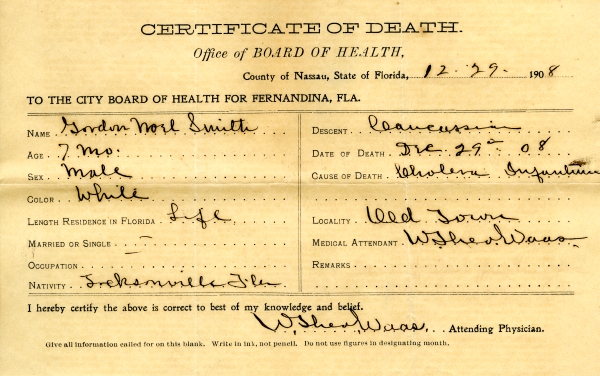
A death certificate completed for the Nassau County Board of Health, patterned after a template recommended by the State Board of Health. This certificate is one of over 2000 death and burial record entries from Fernandina now available for searching on Florida Memory.
By 1900, scientists had demonstrated that yellow fever could indeed be carried by mosquitoes, which helped health authorities to better target their efforts to eradicate the disease. As a result, fear of the “yellow jack” these days is little more than a footnote in the history books.
Cite This Article
Chicago Manual of Style
(17th Edition)Florida Memory. "The Dreaded Yellow Jack." Floridiana, 2015. https://www.floridamemory.com/items/show/295249.
MLA
(9th Edition)Florida Memory. "The Dreaded Yellow Jack." Floridiana, 2015, https://www.floridamemory.com/items/show/295249. Accessed December 16, 2025.
APA
(7th Edition)Florida Memory. (2015, May 5). The Dreaded Yellow Jack. Floridiana. Retrieved from https://www.floridamemory.com/items/show/295249

 Listen: The Latin Program
Listen: The Latin Program